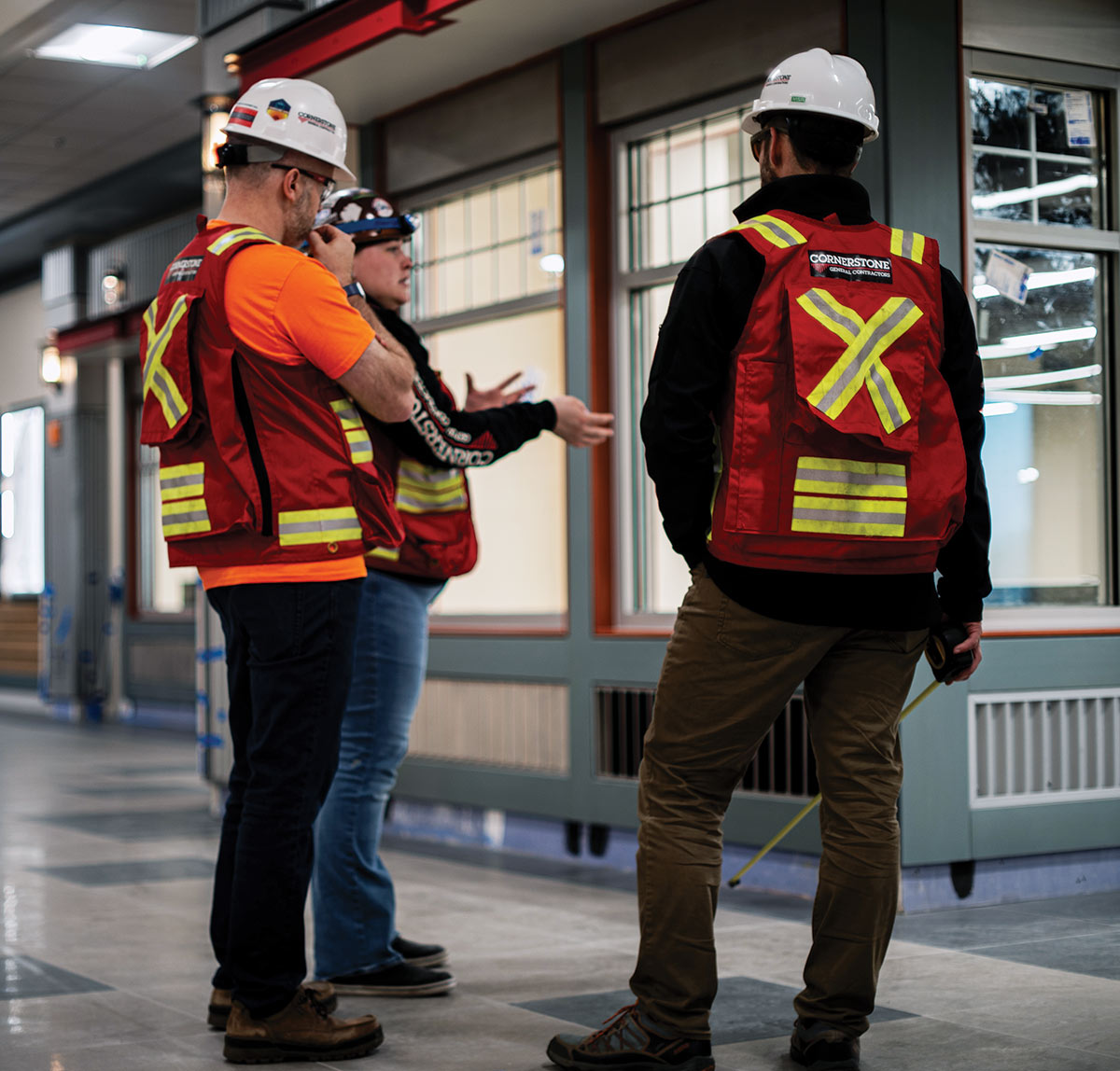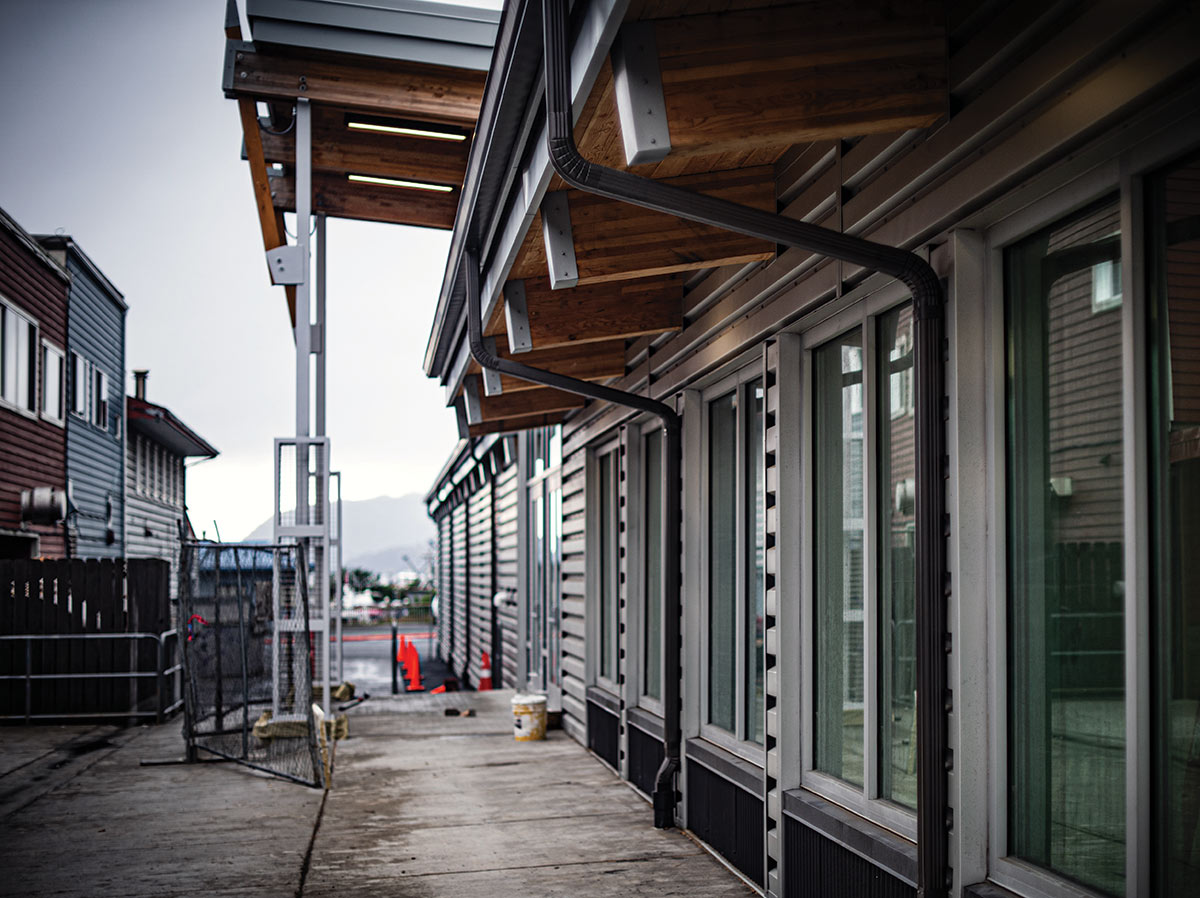pting to replace the old with the new can profoundly impact the community’s fabric. So it is with Kodiak, one of Alaska’s oldest cities, and a new shopping center. The transformation is driven by Kodiak Area Native Association (KANA), which is mainly responsible for healthcare on the archipelago. Through the new Kodiak Marketplace, KANA took a big leap into commercial real estate, a venture that is energizing the whole community through strategic redevelopment.
The structure that would become the Kodiak Marketplace was originally built after the 1964 earthquake as a Kraft Foods store. This development was significant for Kodiak, often likened by elders to “big city” advancements.
In the late ‘70s, Alaska Commercial Company acquired and remodeled the building, operating it until a decade ago. This location provided essential grocery and food security and introduced significant advancements to the community, including a Burger King franchise that marked a notable evolution in the community’s commercial landscape.
In 2014, KANA acquired the property with the aim of significantly contributing to the revitalization of downtown Kodiak while aligning with its overarching goals as a healthcare organization. The old building was demolished in 2021, clearing the property for an ambitious redevelopment.
The community’s need for a centralized space that could act as a nucleus for social interaction, community engagement, and economic initiatives was apparent. Understanding the potential of such a space to greatly enhance the cohesion and vitality of the downtown area, KANA envisioned creating not just a place for commerce but a hub for cultural and communal gatherings. This initiative was geared towards establishing a vibrant center that would foster a deep sense of belonging and unity among Kodiak residents.
Paul Baril, owner and principal architect at Nvision Architecture, led the design team. To serve the project’s broad objective, the building was made with small businesses and improved pedestrian navigation in mind.
The design also reflects deliberate efforts to honor Kodiak’s rich maritime heritage, an element confidently integrated into the architectural design. “The overall design and the exploration of materials, textures, and colors used throughout the building was inspired by local context, the maritime environment of Kodiak, and the local cultural heritage of the Native people of the Koniag region,” Baril says.
To evoke Kodiak’s seafaring identity, Baril points to the ground-floor interior design. “The materials used on the first-level retail corridor were significantly influenced by maritime elements, with one of the main goals being to create a space that resembles a boardwalk or public pier, yet with a sophisticated flair,” he says. This led to the selection of rustic yet colorful materials for the storefronts and the incorporation of wooden piers wrapped with heavy nylon rope, as well as marine block and tackle under the open-air staircase. These elements serve not only as thematic decoration but also meet safety requirements.

Mikel Insalaco
Mikel Insalaco

On the building’s balconies, visitors can sit on benches and look down at the St. Paul boat harbor.
These details mirror a larger commitment focused on community programming, positioning the Marketplace not only as a hub of commerce but also as a catalyst for enhanced pedestrian flow and social interaction.
One goal of the Marketplace is to provide local businesses with affordable and accessible retail spaces. The 63,000-square-foot building seeks to lower the hurdles for small businesses and startups, giving them a platform to expand.
One of the first businesses to announce that it would open in the Marketplace was Bearfoot Bakery. Before hanging a shingle at a mall storefront, co-owners Crystal and Chad Burnside had no retail shop, despite being in business for almost twenty years. The couple set up tables at farmers markets to sell bread, bagels, croissants, and donuts baked in equipment that filled more than two rooms in their house.
The Marketplace aims to be instrumental in creating a dynamic, bustling hub that attracts more foot traffic to downtown Kodiak. This surge in visitors is expected to benefit not just the businesses operating within the Marketplace but also those in its vicinity, generating a beneficial ripple effect that bolsters the overall economic landscape.
Extending that earlier vision, the Kodiak Marketplace has transformed into a vibrant hub for showcasing indigenous artistry and traditions by hosting local artisans and cultural events. Incorporating amenities like the Alutiiq Museum’s gift shop within the Marketplace underscores a commitment to preserving cultural heritage. By allocating spaces for indigenous artists, the Marketplace not only contributes to the local economy but also provides artists with an opportunity to share their heritage with a wider audience.
Feedback from the Kodiak community regarding the Marketplace has been positive, according to KANA staff.
“This building coming back and being an anchor seemed to be the revitalization of downtown that we’ve all been hoping for—it’s exceeded all expectations,” says The Islander Bookshop owner Melissa Haffeman, whose small business was one of the first tenants.
The Marketplace’s success in hosting a comprehensive mix of services and spaces—from a conference center with meeting areas and offices for KANA and a post office to an array of shops and services catering to diverse interests—has solidified its status as a community hub. This multifaceted approach has not only supported local businesses but also enriched the lives of Kodiak’s residents.